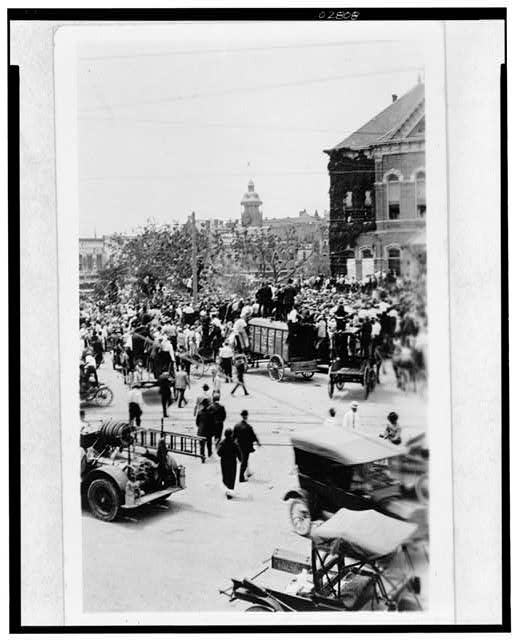EXPOSING THE UNSPOKEN TRUTH: IDA B. WELLS
RESISTANCE :
PSYCHOLOGY AND SOCIAL BEHAVIOR
Systematic Control

Dalrymple. The lynching problem. 1899.
(Library of Congress)
The Black Codes became hallmarks of the Jim Crow system; the goal was to legally and effectively stunt the growth of Blacks—Lynching was a legal social control tactic.
"Lynching, an act of terror meant to spread fear among blacks, served the broad social purpose of maintaining white supremacy in the economic, social and political spheres."
The "rape myth" falsely accused black men who were lynched for raping white women. This warned the Blacks to not challenge white supremacy.

"Here are thousands of such cases throughout the South, with the difference that the Southern white men in insatiate fury wreak their vengeance without intervention of law upon the Afro-Americans who consort with their women."
Ida B. Wells-Barnett. Southern Horrors: Lynch Law in All Its Phases. 1892.
(Project Gutenberg)
"Vigilantism"
The false assertion that coexistence of races would endanger white women was used as a fear tactic to justify senseless lynchings for "self-defense."
This form of vigilantism was created as Southern white men saw themselves as protectors.

NAACP . Crowd gathering in street to watch the lynching of Jesse Washington, Waco, Texas 1916.
(Library of Congress)
"Among the most unsettling realities of lynching is the degree to which white Americans embraced it, not as an uncomfortable necessity or a way of maintaining order, but as a joyous moment of wholesome celebration.
'Whole families came together, mothers and fathers, bringing even their youngest children. It was the show of the countryside – a very popular show,' read a 1930 editorial in the Raleigh News and Observer. 'Men joked loudly at the sight of the bleeding body … girls giggled as the flies fed on the blood that dripped from the Negro’s nose.' "
Jamiles Lartey and Sam Morris. How White Americans Used Lynchings To Terrorize And Control Black People. 2018.
To overcome the prejudice Blacks were subjugated to, Wells challenged racist whites, pointing out the hypocrisy of racism on the basis of “liberty and justice for all.” Despite being ridiculed and ostracized, Wells maintained her integrity and continued her activism.
"The vast majority of lynching participants were never punished, both because of the tacit approval of law enforcement, and because dozens if not hundreds often had a hand in the killing... only 1% resulted in a lyncher being convicted of a criminal offense of any kind. "
Jamiles Lartey and Sam Morris. How White Americans Used Lynchings To Terrorize And Control Black People. 2018.
Tulsa Race Massacre
Believed to be “the single worst incident of racial violence in American history,” the Tulsa Race Massacre occurred under 18 hours on May 31 and June 1, 1921. Racial tensions intensified by the accusation of a Black man, Rowland, raping a white woman, led to the burning of the state’s second-largest Black community.

Damage of the massacre.
Oklahoma Historical Society Photograph Collection

Victims living in tent
Oklahoma Historical Society Photograph Collection